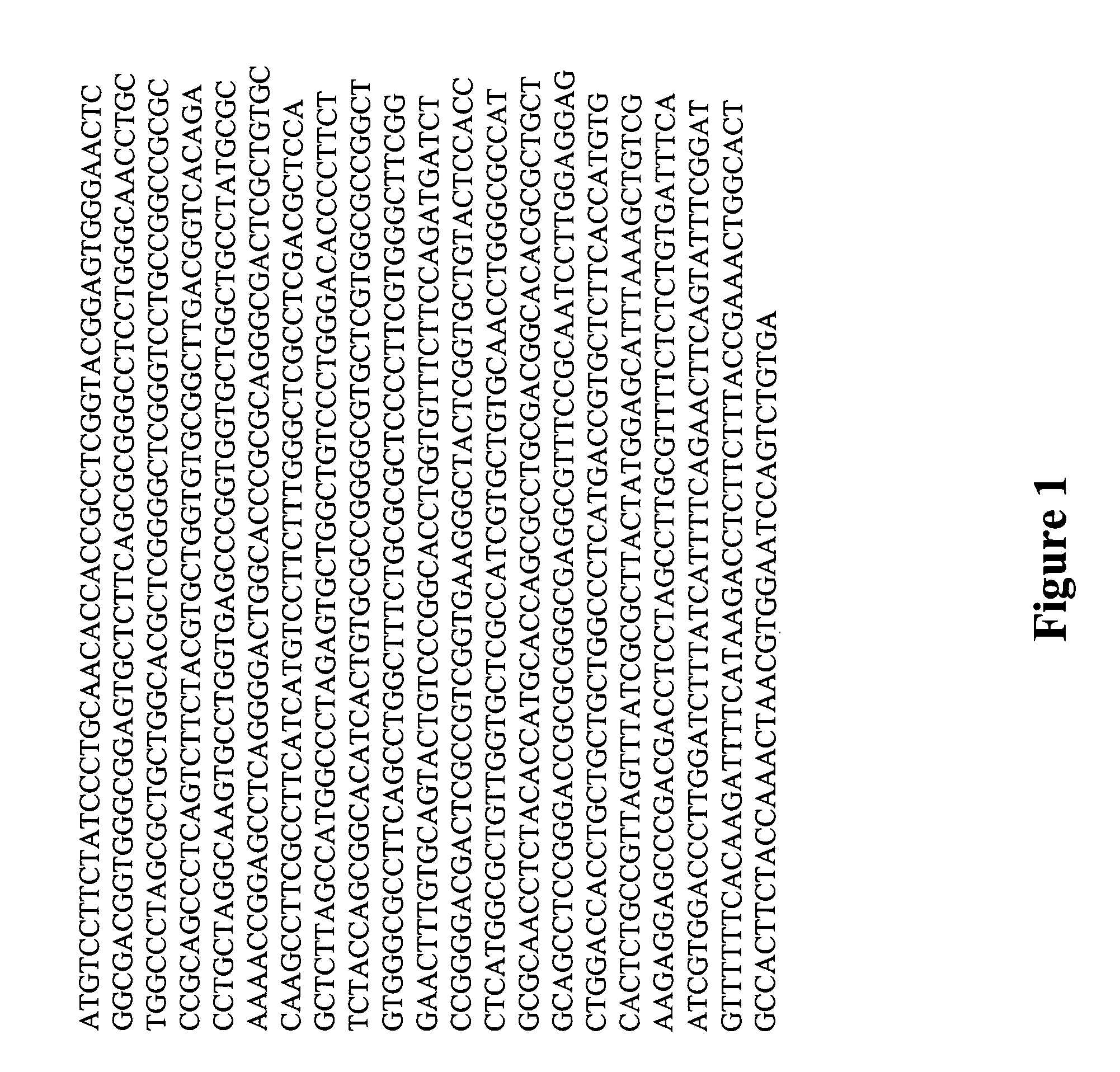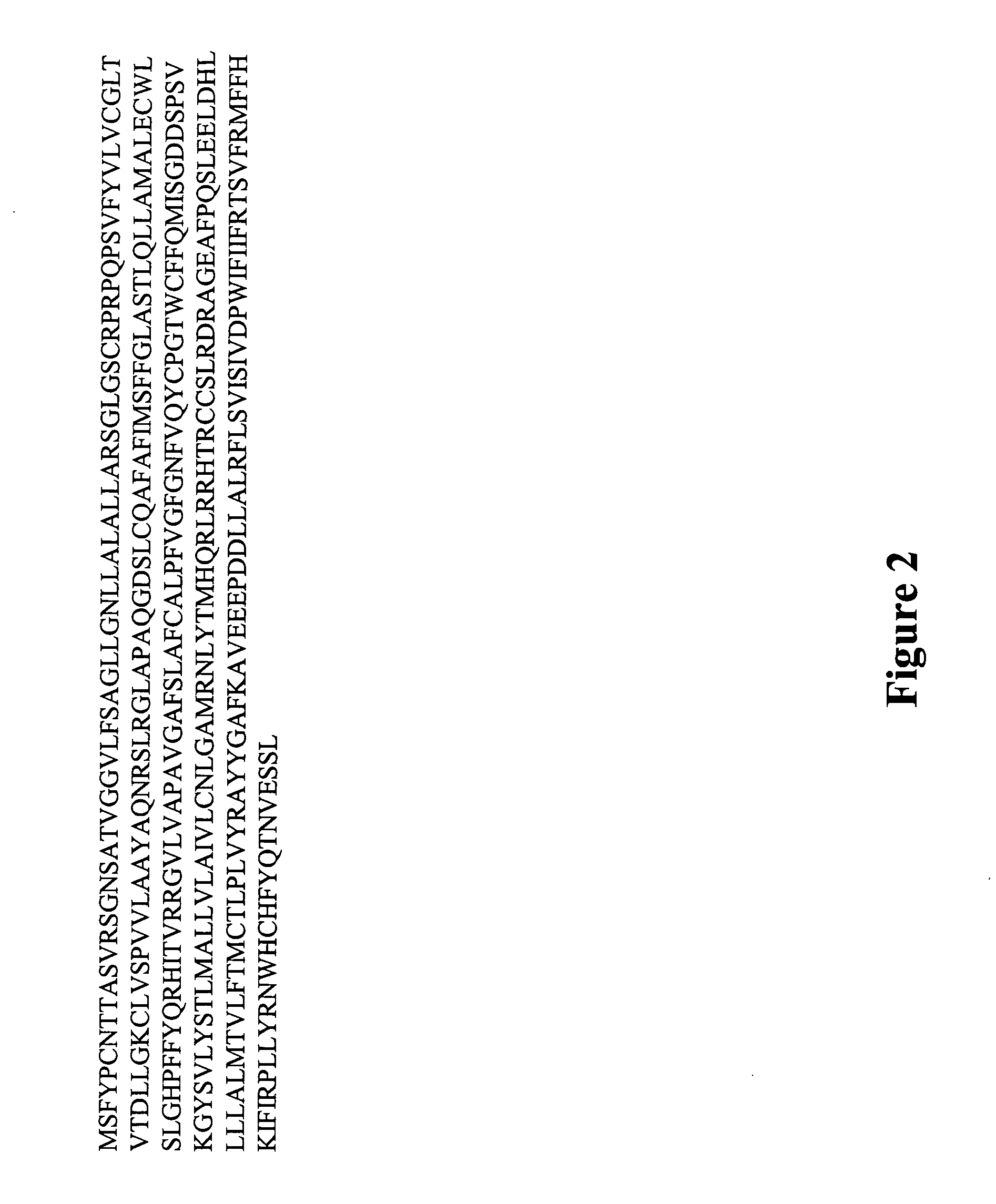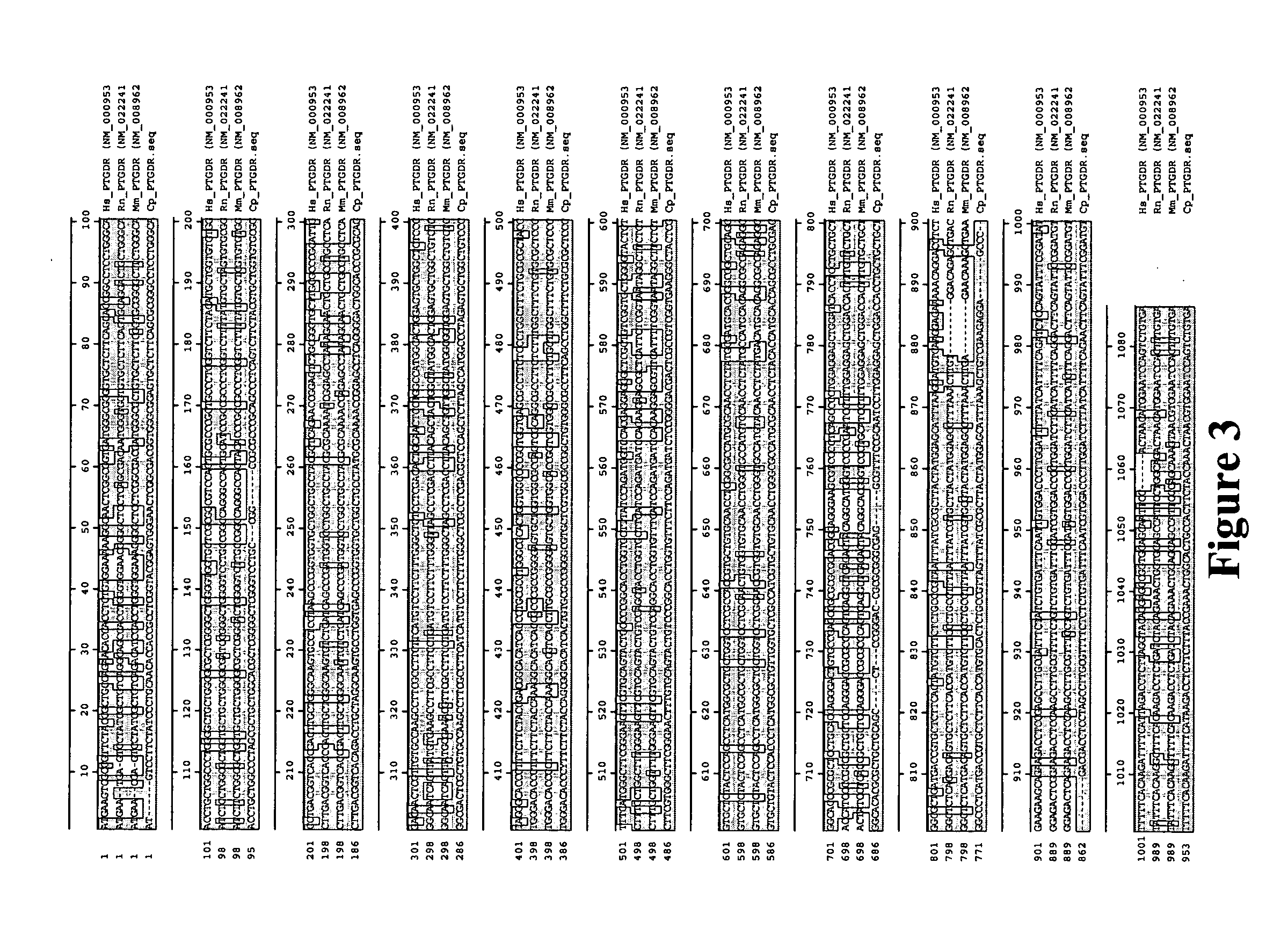Prostaglandin receptor protein and methods of use thereof
a technology of prostaglandin receptor and protein, applied in the field of nucleic acid molecule, can solve the problems of rapid elevation of pgd2 levels in nasal and bronchial lavage fluid, dose-dependent increase in nasal congestion, and difficulty in assessing the activity of a compound as a modulator, effector, agonist or antagonist of the receptor
- Summary
- Abstract
- Description
- Claims
- Application Information
AI Technical Summary
Benefits of technology
Problems solved by technology
Method used
Image
Examples
example 1
Cloning of an Initial Exonic DNA Fragment of the Guinea Pig DP Receptor
[0219]Cloning of the Cavia porcellus DP receptor cDNA was initiated by cloning an exonic fragment of the DP receptor from genomic DNA using PCR. A range of PCR primers were designed using the conserved regions of the Human (U31332), Mouse (NM—008962) and Rat (NM—022241) DP receptor sequences that aligned using the program Sequencher (Gene Codes, Ann Arbor Mich.). Cavia porcellus (guinea pig) genomic DNA was purchased from CeMines (Evergreen, Colo.). The primer used to amplify a 420 bp fragment of Cavia genomic DNA was performed with the primers 675_Topo_F3 (SEQ ID NO: 3: GGGACACCCTTTCTTCTACAA) and 675_Topo_R2 (SEQ ID NO: 4: GAACACATGGTGAAGAGCACTG). The PCR product was cloned using TOPO-TA cloning (Invitrogen, Carlsbad Calif.) and the insert was sequenced on an ABI 3100 DNA sequencer according to the manufacturer's instructions.
3′ and 5′ RACE-PCR Cloning
[0220]The resulting DNA sequence was aligned to the human, mo...
example 2
Northern Blot Analysis
[0222]Northern blot analysis was performed with the initial genomic DNA fragment of the Cavia DP receptor (FIG. 5). Lung was isolated from male Hartley Guinea pigs that had been and challenged with ovalbumin or had not received ovalbumin treatment. Total lung RNA expression from unchallenged Cavia porcellus (Lane 2) was compared to total lung RNA expression from ovalbumin challenged Cavia porcellus (Lane 3). RNA loaded was equivalent as determined by spectrocopy and intensity of the 18S RNA band. Northern blotting for the DP receptor identified a 3–4 kb mRNA in the guinea pig lung, a size consistent with the transcript reported for mouse and human DP (Hirata et al., 1994; Boie et al., 1995). This mRNA was significantly upregulated in the lungs of guinea pigs that had been sensitized and challenged with ovalbumin a result comparable with that reported previously for DP receptor being upregulated in the mouse lung on antigen challenge (Matsuoka et al., 2000). The...
example 3
Sequence Analysis of Guinea Pig to Orthologue DP Receptors
[0223]The nucleotide sequence (FIG. 1) and deduced amino acid sequence (FIG. 2) for the guinea pig DP receptor is shown. The guinea pig DP cDNA contains a 1,032 bp open reading frame which encodes a 345 amino acid protein with a calculated molecular mass of 38,250.
[0224]The guinea pig DP protein contains two potential N-glycosylation sites, Asn-7 in the amino terminus and Asn-86 in the first extracellular loop. There are also 2 potential protein kinase C phosphorylation sites, Ser-46 and Thr-140 located in the first and third cytoplasmic loops, respectively.
[0225]The nucleotide sequence of the guinea pig DP receptor compared with the corresponding sequences of human, rat and mouse DP are shown in FIG. 1. Similarly at the protein level, the sequence identity against the guinea pig DP receptor was 66% for human DP, 63% for mouse DP and 65% for rat DP (FIG. 2).
[0226]Hydropathy analysis confirmed the presence of seven putative tr...
PUM
| Property | Measurement | Unit |
|---|---|---|
| Tm | aaaaa | aaaaa |
| Tm | aaaaa | aaaaa |
| Tm | aaaaa | aaaaa |
Abstract
Description
Claims
Application Information
 Login to View More
Login to View More - R&D
- Intellectual Property
- Life Sciences
- Materials
- Tech Scout
- Unparalleled Data Quality
- Higher Quality Content
- 60% Fewer Hallucinations
Browse by: Latest US Patents, China's latest patents, Technical Efficacy Thesaurus, Application Domain, Technology Topic, Popular Technical Reports.
© 2025 PatSnap. All rights reserved.Legal|Privacy policy|Modern Slavery Act Transparency Statement|Sitemap|About US| Contact US: help@patsnap.com



